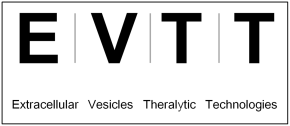Nanomaterial Exposure, Extracellular Vesicle Biogenesis and Adverse Cellular Outcomes: A Scoping Review
The progressively increasing use of nanomaterials (NMs) has awakened issues related to nanosafety and its potential toxic effects on human health. Emerging studies suggest that NMs alter cell communication by reshaping and altering the secretion of extracellular vesicles (EVs), leading to dysfunction in recipient cells. However, there is limited understanding of how the physicochemical characteristics of NMs alter the EV content and their consequent physiological functions. Therefore, this review explored the relevance of EVs in the nanotoxicology field. The current state of the art on how EVs are modulated by NM exposure and the possible regulation and modulation of signaling pathways and physiological responses were assessed in detail. This review followed the manual for reviewers produced by The Joanna Brigs Institute for Scoping Reviews and the PRISMA extension for Scoping Reviews (PRISMA-ScR): checklist and explanation. The research question, “Do NMs modulate cellular responses mediated by EVs?” was analyzed following the PECO model (P (Population) = EVs, E (Exposure) = NMs, C (Comparator) = EVs without exposure to NMs, O (Outcome) = Cellular responses/change in EVs) to help methodologically assess the association between exposure and outcome. For each theme in the PECO acronym, keywords were defined, organized, and researched in PubMed, Science Direct, Scopus, Web of Science, EMBASE, and Cochrane databases, up to 30 September 2021. In vitro, in vivo, ex vivo, and clinical studies that analyzed the effect of NMs on EV biogenesis, cargo, and cellular responses were included in the analysis. The methodological quality assessment was conducted using the ToxRTool, ARRIVE guideline, Newcastle Ottawa and the EV-TRACK platform. The search in the referred databases identified 2944 articles. After applying the eligibility criteria and two-step screening, 18 articles were included in the final review. We observed that depending on the concentration and physicochemical characteristics, specific NMs promote a significant increase in EV secretion as well as changes in their cargo, especially regarding the expression of proteins and miRNAs, which, in turn, were involved in biological processes that included cell communication, angiogenesis, and activation of the immune response, etc. Although further studies are necessary, this work suggests that molecular investigations on EVs induced by NM exposure may become a potential tool for toxicological studies since they are widely accessible biomarkers that may form a bridge between NM exposure and the cellular response and pathological outcome. [get the paper]










